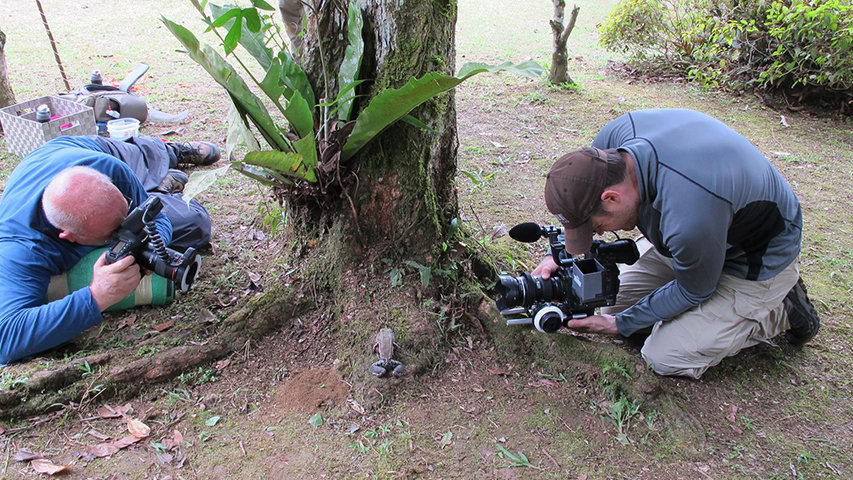
Learning to See: The Intriguing World of Insects
by Yash Saboo April 26 2018, 4:56 pm Estimated Reading Time: 2 mins, 45 secsA documentary about insects is a type of a film which one wouldn't pick to watch on a binge-watch weekend. Yet there's something different about Learning to See, a beautiful insect documentary filled with stunning photographs and visuals. Learning to See documents the journey of macro insect photographer Robert Oelman as he captures images of some of the neotropical rainforest’s most exotic creatures.
The film is directed and produced by Oleman's son Jake. Oelman read Colombian writer Gabriel Garcia Marquez's novel Love in the Time of Cholera and decided to travel to Colombia and then, amid the country's drug-fuelled violence in the early Nineties, he bought land and stayed. He started taking photos - first of the Colombians around him, then of hummingbirds, then of insects. With the aid of a local assistant with the vision to spot bugs seemingly everywhere, Oelman discovered both a photographic passion and a problem.
For many people of Oleman's age, retirement means relaxing, an occasional game of golf, and the decision of whether to move to California, Florida or Arizona. So how he ended up scouring the jungles of South America in the dead of night with nothing but a camera and a flashlight has been a mystery.
"I was often asked why my father moved to the kidnapping capital of the world. For an American to transplant to Colombia in the early 1990’s seemed crazy to his family and friends. No one could understand why an intelligent person would choose to do something so apparently absurd. But as he started to take photos and share stories of his experiences, it began to make sense what he was doing", says Jake.

Source : Screen Daily
"When my father first moved to Colombia, he had no formal training as a photographer but over time he has become a unique talent. He has taught himself all of the technical and artistic skills that he needs. Lighting, composition, studio design, printing, hardware, software, etc. As he honed his new craft, Colombia’s natural surroundings guided him. Flowers, hummingbirds, landscapes, and eventually insects became his subjects," he adds.
It is impossible to watch Learning to See without feeling some—quite a lot, actually—of the wonder and respect Oelman feels in the presence of his subjects. That is not an easy thing to achieve.
There's love hidden and that’s what Oelman’s pictures find. They find it in the dazzling colours of bugs; in their extraordinary mix of textures—the armoured mantises, the pulpous caterpillars, the diaphanous wings of the flying insects. They find it, too, in the extraordinary ability of some insects to camouflage themselves. Deer and leopards may be dappled or spotted to blend in with forest lighting, but if one is standing in front of you, there no mistaking the fact that it’s there. But the leaf-mimicking katydid—with what appear to be the same brown spots, the same mould markings, even the same missing pieces on its wings as old, damaged leaves—can vanish entirely into its surroundings.
Learning to See doesn't just talk about the beauty of insects but also how they mimic a personality. They are an integral part of food-webs and ecosystem. The film shows their worth.




-173X130.jpg)
-173X130.jpg)
-173X130.jpg)
-173X130.jpg)
-173X130.jpg)
-173X130.jpg)
-173X130.jpg)
-173X130.jpg)